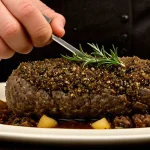Defining Characteristics of Modern British Cuisine
Modern British cuisine reflects a dynamic British culinary identity, blending rich traditions with contemporary innovation. Central to this identity is the use of distinctive ingredients and local produce like Cornish seafood, Yorkshire lamb, and Scottish game, which shape the authenticity and freshness of today’s dishes.
Traditional British food often featured hearty cooking methods such as roasting and stewing. These have evolved, integrating techniques like sous-vide and molecular gastronomy. This shift allows for refined textures and flavours while preserving the spirit of classic preparations.
In the same genre : How Can Traditional UK Dishes Be Modernized for a Healthier Lifestyle?
Examples of dishes highlighting this evolution include the reinvention of beef Wellington, now lighter with refined pastry, and the modern take on the Yorkshire pudding paired with novel sausages or vegetarian options. Contemporary British cuisine also celebrates desserts like sticky toffee pudding with updated presentations, showcasing how classic ingredients meet modern aesthetics.
By merging the old and new, modern British cuisine keeps its culinary heritage alive while appealing to today’s diverse and sophisticated palates without losing its inherent character.
This might interest you : What are the secrets to a perfectly cooked haggis?
Regional Diversity and Specialties
British regional dishes offer a vivid tapestry of flavours rooted deeply in local history and geography. Each British food region provides unique dishes reflecting its environment and cultural heritage. For instance, Cornwall’s renowned pasties, filled with meat and vegetables, developed originally for miners needing a portable meal. In Scotland, haggis remains emblematic—combining sheep offal with oats and spices—rooted in pastoral traditions. Yorkshire is famous for its pudding, while Welsh cuisine highlights lamb and leeks, emblematic of its agricultural legacy.
The role of geography and climate cannot be overstated. Coastal regions benefit from abundant seafood, shaping distinct British food regions known for fresh fish and shellfish. Inland areas often focus on game and root vegetables, products of cooler, wetter climates. These climatic influences shape available ingredients and, by extension, the recipes passed down through generations.
Local specialties are thus a direct reflection of British regional dishes and their origins. The British culinary identity is enriched by this diversity, preserving traditional British food while allowing local ingredients to shine. These British food regions continue to nurture culinary traditions, anchoring contemporary British cuisine in varied, place-based flavours.
Fusion and Multicultural Influences
Modern British cuisine thrives on the rich tapestry of British multicultural food, where the influence of immigration has reshaped traditional dishes and introduced global flavours to UK menus. The fusion cuisine UK scene merges classic British elements with spices, techniques, and ingredients from Asia, Africa, and the Caribbean, reflecting the diverse population and evolving tastes.
How does fusion cuisine UK impact traditional British food? It reinterprets staples like fish and chips by adding curry spices or serves Sunday roasts with a side of tangy chutneys inspired by Indian cooking. This blending offers fresh perspectives while maintaining the core identity of British food.
Popular modern food trends UK include dishes that balance heritage and innovation, such as curry-infused shepherd’s pie or jerk-seasoned sausages. These creations celebrate both the roots of traditional British food and the contemporary palate’s openness to global influences.
The ongoing evolution within British culinary identity ensures that the food scene remains vibrant and dynamic. This cross-cultural exchange doesn’t dilute tradition; instead, it enriches the British culinary landscape with new flavours and ideas, providing exciting options for diners seeking both authenticity and novelty.










